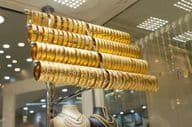Gold Plummets: Dollar Influence on Metals

Gold Prices at a Low: Influence of Dollar and Trade Sentiment on Precious Metals
The price of gold has plummeted to a nearly three-week low after a new trade agreement between the United States and the European Union heightened investors' risk appetite, while the market's attention shifts to the upcoming mid-week U.S. interest rate decision. The dollar index climbed to a one-week high, further diminishing the appeal of precious metals.
Strengthening Dollar Restrains Gold
On Monday, spot gold fell by 0.6% to $3,316.03 per ounce, hitting its lowest level since July 9. The American gold futures price also dropped by 0.7% to $3,313.2. The dollar index, which measures the value of the greenback against other currencies, rose to a one-week high, making gold more expensive for foreign investors purchasing in non-dollar denominations.
Investors typically turn to gold amid growing economic uncertainty, inflation, or geopolitical risks. However, recent positive trade news has improved market sentiment, diverting capital towards riskier assets.
Trade Agreements and 'Risk-On' Sentiment
American and European leaders reached an agreement over the weekend to impose a 15% tariff on EU products, significantly lower than the previously considered 30% level. This move alleviated market concerns about a broader trade war and strengthened the dollar. A week earlier, the U.S. and Japan had also reached an agreement, while U.S.-China talks continued in Stockholm on Monday, albeit without expected breakthroughs from negotiators.
These developments have bolstered global investor optimism, a scenario often referred to as a 'risk-on' sentiment—where investors are more inclined to invest in riskier assets like stocks instead of gold.
Fed Decision and Interest Rate Expectations
Focus is now on the two-day U.S. Federal Reserve meeting concluding Wednesday. Expectations are that the Federal Reserve will maintain its benchmark rate within the 4.25–4.50% range, although the market continues to factor in the possibility of a September rate cut.
A lower interest rate environment typically favors gold, as it diminishes the appeal of alternative yield-bearing assets such as bonds. However, the strengthening dollar and increased risk-taking behavior are countering this effect.
Movement in Other Precious Metals
Apart from gold, other precious metals also responded to the changing market environment:
Silver: slightly decreased by 0.1% to $38.12 per ounce
Platinum: fell by 0.6% to $1,393.25
Palladium: uniquely strengthened, rising by 2.1% to $1,245.52
Summary
Gold's performance continues to be sensitive to geopolitical and economic developments, particularly dollar trends, interest rate expectations, and investor sentiment. During the current 'risk-on' period, precious metals are taking a back seat, yet future rate decisions and trade negotiations could easily bring gold back into focus, especially if market uncertainty begins to rise again.
(The article is based on Donald Trump and the European Commission's weekend agreement.)
If you find any errors on this page, please let us know via email.


